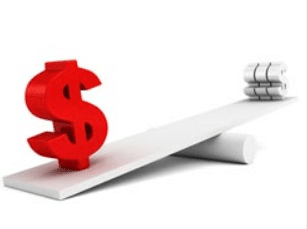What is Leverage?
Leverage is the ability to control or manage a large sum of money using a small amount of your own money and borrowing the rest. In financial lingo, this is known as Other People’s Money (OPM).
A good example of leverage at work is when an investor borrows money to invest in a stock. Let’s say, the price of ACME’s stock is trading at $100 and you have $10,000, without leverage; the maximum number of shares you can buy is 100. If the company’s stock rises to $200 and you decide to exit, your maximum profit will be $10,000.
However, if you go to a bank and borrow another $10,000 and use it to buy the stock, you can now afford to buy 200 shares. When the stock doubles, your total profit will be $40,000. After returning the borrowed funds to the bank, your profit will be $20,000 minus the bank’s interest.
When leverage works, it is very useful to traders and investors. When it fails, the losses can exceed the initial capital of the investor leading to negative balances. In the example above, if the stock fell to zero, the investor would first suffer a personal loss of $10,000. They would then need $10,000 more to pay back to the bank.
Financial Leverage
In the Forex and contract trading, the concept of leverage works in a similar way to that of borrowing money to buy a stock. Online brokers extend virtual credit known as leverage to their customers. This virtual credit is usually collateralised by the customer’s deposit. It enables them to trade in more financial assets.
It is impossible to separate the concept of leverage in trading with that of margin. Margin is the amount of money a trader needs to have so that he or she can use leverage. It is simply a good faith deposit that brokers need before they can extend credit to the trader. The margin is expressed in percentages. If the broker requires a 2% margin, you have a leverage of 1:5 and if they require a margin of 0.25%, you have a leverage of 400:1.
For example. If a trader has $1,000 in the account and uses a leverage ratio of 1:5, this means that the trader can buy assets worth $5,000. If the trader has a leverage of 100:1, it means that he or she can buy assets worth $100,000.
The amount of leverage offered by brokers depends on the regulatory guidance. In the EU for example, the guidelines cap this leverage to 30:1. In the US, the Financial Industry Regulatory Authority (FINRA) requires brokers to only offer leverage to accounts with a minimum of $2,000.
Leverage strengths
Using leverage can be advantageous in three ways. First, it can help a trader maximise profits per trade as you will see in the example below. Second, a leveraged trader with limited resources can trade in expensive assets such as Bitcoin, gold, and platinum. Without leverage, it would not be viable for a trader with a $1,000 account to trade in gold, which is currently trading at $1,200.
The size of leverage a trader uses is very important in determining the success. When trades go well, a highly leveraged trader can make more money than a trader with lower leverage.
For example, you have $1,000 in your account, and you decide to sell the USD/JPY pair which is trading at 110. Your account has a leverage of 50 and the broker requires a margin deposit of 1%. Also, assume that the standard lot is worth $5. For five standard lot sizes, the worth is $25.
In this trade, you will be selling short $50,000 worth of the USD/JPY. Using the above assumptions, if the USD/JPY pair moves lower by 100 pips, your profit will be $2,500 (100 pips x 25).
If on the other hand, you decided to use a leverage of 10, you would have a total trading capital of $10,000. In case of a 100-pip gain, your total profit would be $250.
Managing leverage risk
Therefore, a higher leverage ratio translates to a higher profit when the trade goes right. If the asset moves in the opposite direction, a highly leveraged trader loses more money than one who has a low leverage.
New traders often overestimate the positive effect of this feature and tend to apply high leverage all the time. This is not always the best practice. Experienced professionals on the other hand understand the risks of being overleveraged. To reduce the risks, they commonly use low leverage and make smaller profits which add up in the long run.
For example. In January 2015, the Swiss National Bank surprised the market when it unpegged the Swiss Franc from the Euro. This led to huge swings in the market, which resulted in the near-collapse of many highly-leveraged companies. Many traders who were short the Swiss Franc—and had not protected their trades with stop losses—lost their entire trading accounts within seconds.
To reduce the risks, brokers tend to lower the leverage ratios when major market swings are expected. Some of these events are during major elections, major referendums, and major economic data releases.
OctaFX protects traders from these extreme market events by offering Negative Balance Protection. The most you could ever lose is the investment in the trade.
Bottom line
Leverage is a double-edged sword. When trades go well, a highly leveraged trader makes more profits. When they move in the opposite direction, the losses can often exceed the total account capital. Because all traders make errors, the secret is to find a good balance of leverage. For new traders, it is recommended that they first understand the meaning of leverage and margin. Then, they should start trading with the minimum available leverage. As they become more experienced, they can then increase the leverage to a level that does not expose them to a lot of risks.







